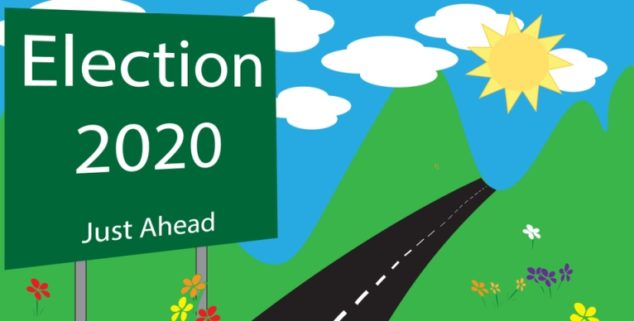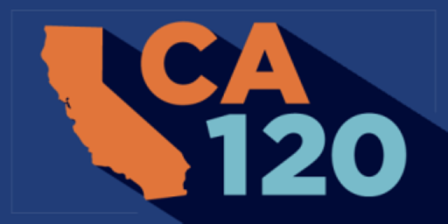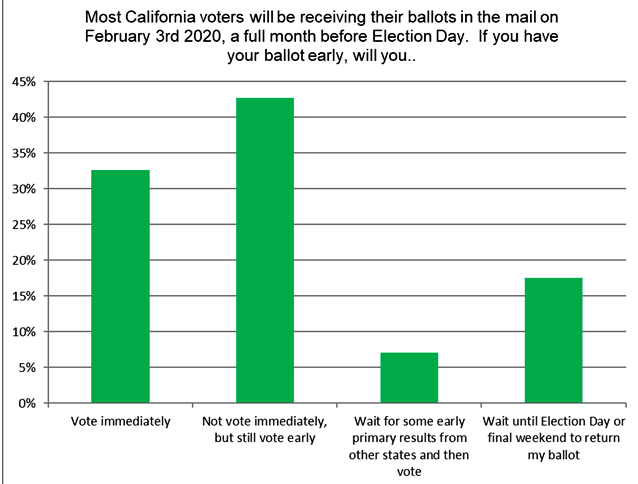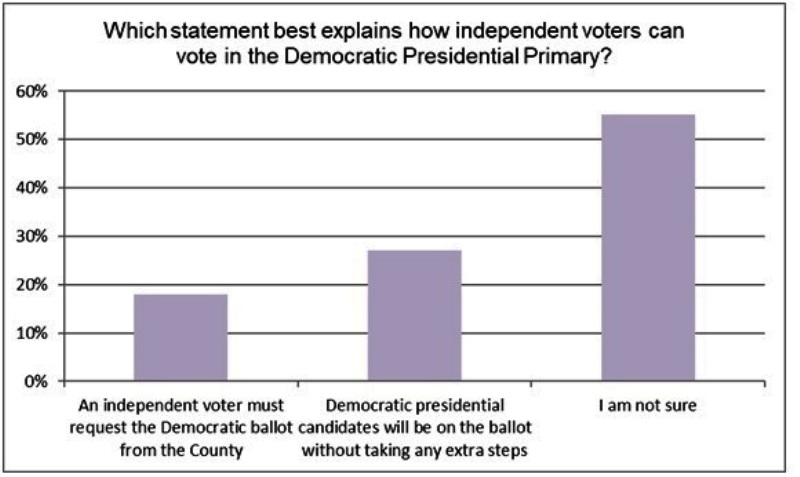News
CA120: Election Day is nearer than you think
 Illustration of the road to the California's 2020 elections. (Image: karenfoleyphotography, via Shtuterstock)
Illustration of the road to the California's 2020 elections. (Image: karenfoleyphotography, via Shtuterstock)Believe it or not, California’s much-anticipated primary election is right around the corner.
Sure, we’ve got Thanksgiving, Christmas, New Years and Super Bowl Weekend intervening. And all the air is about to sucked out of our news cycles with the impeachment inquiry and, yes, we could have a government shutdown in a few weeks.
But whether we are ready or not, ballots will be mailed out starting Feb. 3 and Californians will quickly begin casting votes for the early presidential primary — weeks before the March 3 election day.
Yet the herd mentality of most the presidential campaigns has lunged toward Iowa.
When I used to run campaigns, I organized everything into weekends – that’s when we had events, rallies, precinct walks, town halls. Once you account for everything blocking up the calendar,. there are just seven free weekends until ballots drop in California.
Political observers are expecting an extremely high turnout among Democrats and Independents who can vote in the Democratic primary. The haul from the Golden State is huge – a whopping 416 delegates, more than 20% of the 1,919 that will be required to win the nomination. (For a quick look at the numbers of our latest tracking poll, click here. For the more detailed toplines and crosstabs, click here)
At the same time as 15 million voters in California get ballots, the small state of Iowa will see roughly 1% of that show up at local caucuses, an intense grassroots process that will mark the first official delegate allocations in this election season. The haul from Iowa – 27 delegates.
It’s pretty simple math that led California politicos to think our state would be the focus of early campaigning.
Yet the herd mentality of most the presidential campaigns has lunged toward Iowa. Candidates who are laying it on the line in the Hawkeye State include Minnesota Sen. Amy Klobouchar, South Bend, Indiana Mayor Pete Buttigeig, New Jersey Sen. Cory Booker and Californian’s own Sen. Kamala Harris.
“When I look around this arena I don’t just see 14,000 Iowans, I see 14 million Californians.” — Andrew Yang
Top candidates Elizabeth Warren and Joe Biden aren’t even attending the California Democratic Party convention causing Democratic Party Chair Rusty Hicks to flame them on Facebook for their “blatant disregard and disrespect to California’s grassroots leaders.”
To put a point on it, Elizabeth Warren, the front-running candidate in our Capitol Weekly CA120 polling, is turning down a two-day heavily packed convention in Long Beach with thousands of activists and a statewide media opportunity to attend a town hall at Wartburg College in Iowa. Wartburg is a small, 1,500-student campus and their most famous alum is House Minority Leader Kevin McCarthy. Not even the Republican one, this Democratic one.
Presidential candidate Andrew Yang might have summed up the view of all the presidential campaigns best when he said, at the Iowa Liberty and Justice Dinner, “I did the math. Iowa, do you know how many Californians each of you are worth? One thousand Californian’s each. When I look around this arena I don’t just see 14,000 Iowans, I see 14 million Californians.”
Is this an indictment of the move to push the California primary to March?
Were California lawmakers naïve in thinking that California would become a bigger player in the presidential primary? Maybe it was foolish to expect a focus on issues that are most important to voters here and maybe forcing campaigns to spend money here – not just treat the state as a giant ATM for their spending in other states.
The idea that regular voters are “waiting for the field to clear” flies in the face of both recent history and a new question in this month’s CA120 tracking poll.
Or is this an indictment of the political strategy is being employed by each of these campaigns? It’s possible that candidates who could be positioned to win big in California are ceding ground to a candidate like Bernie Sanders who was on the primary ballot in 2016, or a late-starter like Michael Bloomberg who could just fly right over the early states and throw $50 million to $100 million up on California TV.
Here are some datapoints on the California electorate that should concern campaigns that are thinking they can wait and swoop in after a few early states have given them some momentum.
15,296,679 – The current number of ballots that will be mailed out on Feb. 3 after accounting for all voters who purposefully became absentee voters, and those living in counties, or parts of counties, that are getting all-mail ballots under the Voter’s Choice Act, as we outlined in a recent CA 120 article. That’s 72% of the electorate, and will likely grow.
We’ve seen a lot of prognostication about how these voters aren’t going to vote until the end, so campaigns can wait.
Maybe the kinds of people who are making these statements – the highly engaged consultants and reporters who are tracking every move of the campaigns – will actually wait for the opportune time to vote. But regular voters aren’t strategic in this way – the idea that regular voters are “waiting for the field to clear” flies in the face of both recent history and a new question in this month’s CA120 tracking poll.
Our initial projection was that 25% of California voters will have cast ballots by the time of the Nevada Caucuses, and 40% will have voted by the South Carolina primary
In the 2016 Primary, 48% of all Democratic by-mail voters cast ballots within the first 10 days of receiving their ballots. In 2008, which was a February Democratic primary, 53% of Democratic absentee voters cast their ballots in the first 10 days.
Surveys conducted this month for Capitol Weekly back up this point.
Voters who will be getting mailed ballots in February were asked when they would likely cast their ballots, and more than 75% said they would vote early, only 8% said they would wait for the other early primary state results, and 18% said they would vote that final weekend or drop their ballot off at the polls.
The data is there. Political Data has maintained the exact day each voter returned their by-mail ballot in every election since 2006. That’s literally hundreds of millions of datapoints based on the time function in political campaigns.
But that data is useless if campaigns don’t get a head start with these voters and only focus on the other early states. Our initial projection was that 25% of California voters will have cast ballots by the time of the Nevada Caucuses, and 40% will have voted by the South Carolina primary. And that’s not 25% and 40% of by-mail voters, that’s ALL voters. This estimate could even be ticked up a bit with the addition of more counties adopting the vote center model.
4,146,001 – 4,146,001 – The current number of postcards that will be mailed from the counties to independent voters who are eligible to vote in the Democratic primary. But, note: without these voters taking action, on Feb. 3 this is how many voters will start getting ballots with no presidential candidates listed at all.
This was a big hurdle in 2016, when we first focused on the challenges for independents and a follow-up article in which we polled voters who said they wanted to vote in the Democratic primary if they got the correct ballot.
A campaign focusing on Iowa has to deal with this reality: In mid-December there will be over four million potential voters getting postcards from their county registrars.
A whopping 36% of independents wanted to vote in that Democratic primary and cast their ballots despite not having the Democratic candidates listed – and an unknown number of voters didn’t vote because their ballots didn’t have the presidential candidates even listed.
Our projection was that hundreds of thousands of voters were disenfranchised.
Now, heading into 2020, the new vote center model and increased choices by other voters to become vote-by-mail is exacerbating this issue.
Add to this the dramatic growth in independent registrants and the hundreds of thousands of voters who were registered No Party Preference at the DMV, and still, to this day, think they are registered with a political party. This has doubled of the number of voters who will need to explicitly request a partisan ballot for this coming primary.
So, a campaign focusing on Iowa has to deal with this reality: By mid-December there will be over four million potential voters getting postcards from their county registrars, and needing to affirmatively request a Democratic ballot.
If a voter doesn’t get this step done by early January, they will be receiving a by-mail ballot that doesn’t have any presidential candidates on it.
And here’s what makes this problem greater. In our statewide tracking survey, over 2,000 independents who are likely primary voters have been asked if they planned on voting in the Democratic presidential primary, and a whopping 90% said they did.
But, among those surveyed, only 18% know that they have to request their Democratic ballot from the county, 28% believe all the presidential candidates will be listed on their ballot, (like they are for legislative, congressional and statewide races), and a majority just aren’t sure.
One important change for 2018 is that counties will be able to receive emails and calls from voters to receive these ballots. So, if their postcard gets lost among holiday cards and junk mail, they have a way to resolve the issue and get a ballot.
But this isn’t going to just happen magically. Campaigns will need to be aggressive at making sure their targeted voters who are independents are getting the correct ballots. And doing this from Iowa isn’t likely the best means to accomplish it.
If a voter doesn’t get this step done by early January, they will be receiving a by-mail ballot that doesn’t have any presidential candidates on it, and they will only have one of three choices: (1) they can request a new ballot, invalidating the one they have in their possession; (2) they can show up at their polling place and relinquish their ballot, getting a replacement; or (3) they can show up at their polling place and vote with a provisional ballot. Those are three remedies that are exponentially tougher than getting a voter the right ballot in the first place.
If this were the 1970s and Californian’s were all voting at the polls, then every early primary win and every earned media moment would have maximum impact right as voters were casting ballots.
But in this environment, where voters now are spread out over a time horizon that begins the same day as Iowa votes, all the way to Super Tuesday, and when there is this independent voter wild card, campaigns can’t wait.
It might be hard for a campaign to win California, even if it works here every day between now and March.
But it is really easy for a campaign that should have all the advantages here to ultimately lose it.
—
Editor’s Note: Paul Mitchell, a regular contributor to Capitol Weekly, is the creator of the CA120 column, vice president of Political Data Inc., and owner of Redistricting Partners, a political strategy firm.
Want to see more stories like this? Sign up for The Roundup, the free daily newsletter about California politics from the editors of Capitol Weekly. Stay up to date on the news you need to know.
Sign up below, then look for a confirmation email in your inbox.

Leave a Reply